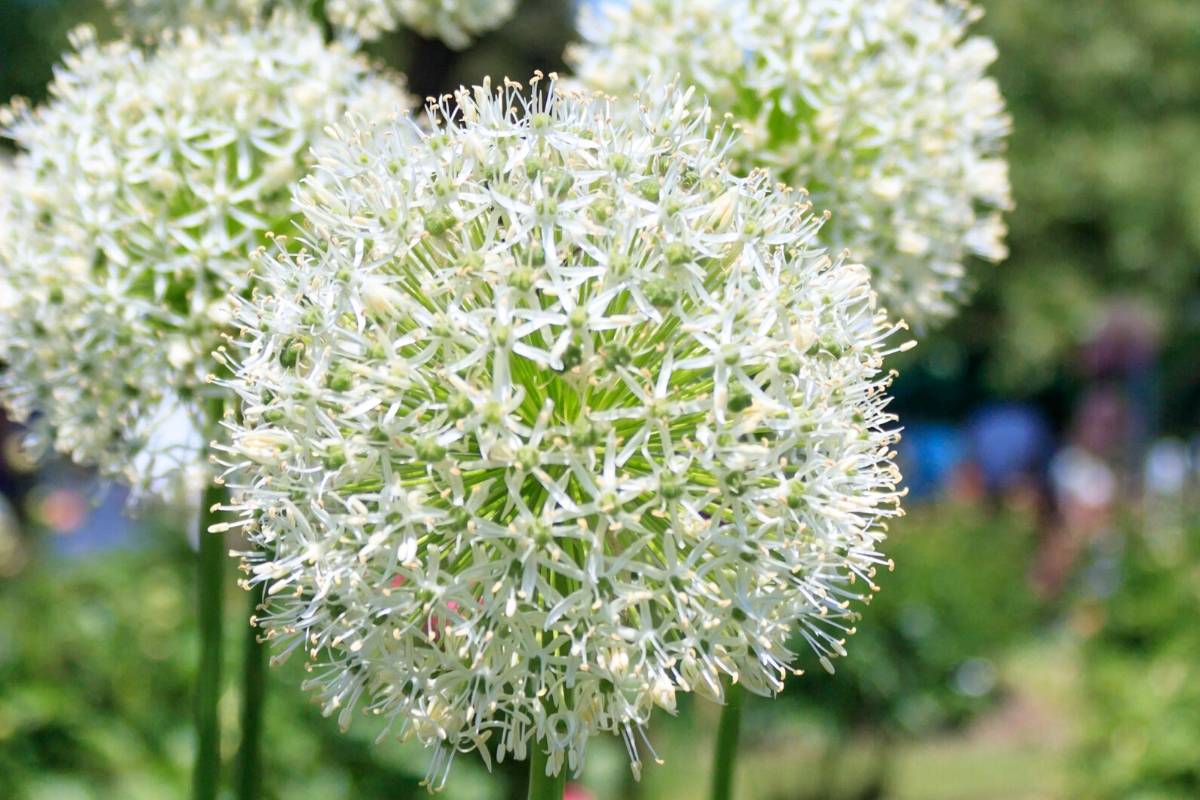Onions can be a bit confusing for beginner veggie gardeners who are wondering, what is the difference between spring onions, chives and leeks? Are spring onions, bunching onions, scallions and shallots all different onion varieties? When it comes to bulb onions what are long day and short day onions?
The Allium family encompasses all of these wonderful vegetables; garlic, onions, leeks, chives, shallots, spring onions, bunching onions and bulb onions. With so many varieties to choose from how do you know which one you want to grow? Let’s explore the wonderful and diverse range of onions!
Bulb Onions
Bulb onions (Allium cepa) are usually split into 3 categories; short day, intermediate and long day onions. They are defined into these categories by the amount of daylight hours required by the plant to form a bulb/onion. Long-day varieties need around 15 hours of sunlight per day, whereas short-day varieties need just 10 hours of daylight per day to form a bulb. Then there are neutral or intermediate varieties which need around 12-13 hours.
As a general rule short-day onions are usually juicy, milder in flavour, and sweeter due to their higher sugar content. Short day onions are great for cooking or eating fresh but do not store as well as long day onions.
Brown or yellow bulb onions generally have the strongest and most pungent flavour of all the onion varieties and are the most commonly used variety for cooking or caramelising due to their strong intense flavour. White onions have a much milder flavour and a crispier texture than brown onions and often do not keep as well in storage. They are commonly used raw, grilled or lightly cooked due to their less over-powering flavour.
Red onions (also incorrectly known as Spanish onions) have a sharp sweet flavour and have the highest natural sugar content of all the bulb onion varieties. They are often consumed raw or lightly cooked and are a common ingredient in salads or bruschetta.
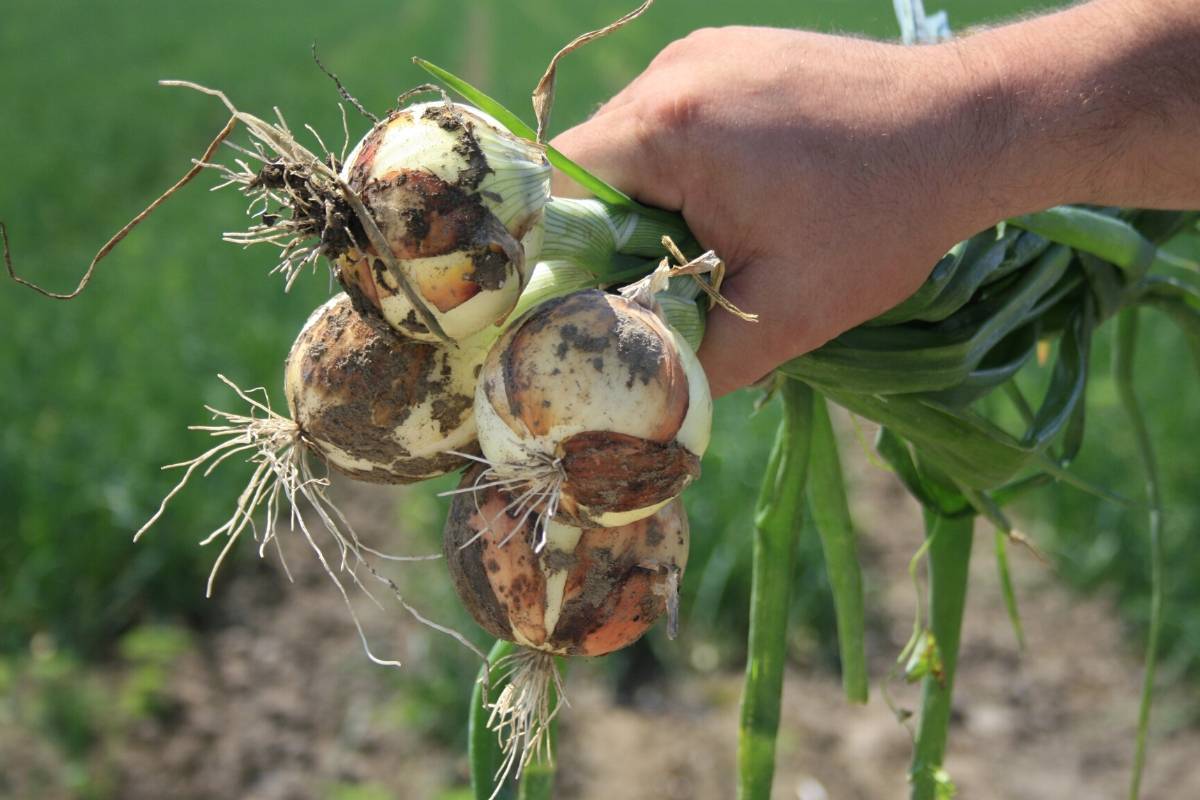
Bunching Onions
Bunching onions (Allium fistulosum) are often also known as welsh onions, they are a variety of onion which produce long tubular thick hollow leaf growth on a white stem. These onion varieties do not form bulbs regardless of how long they are left in the ground. As they do not produce a swollen bulb, they can be grown a lot closer together than the bulb producing varieties. Bunching onions have a great oniony flavour without the intense pungency of bulb onions. Their long slender stalks are usable from just above the root to the tip. They are great used in stir fries, soups and omelettes. The larger varieties can look remarkably similar to leeks and the smaller varieties can look quite similar to chives.
(Bunching onions are sometimes incorrectly called shallots or spring onions. Supermarket bought spring onions are often actually bunching onions.)
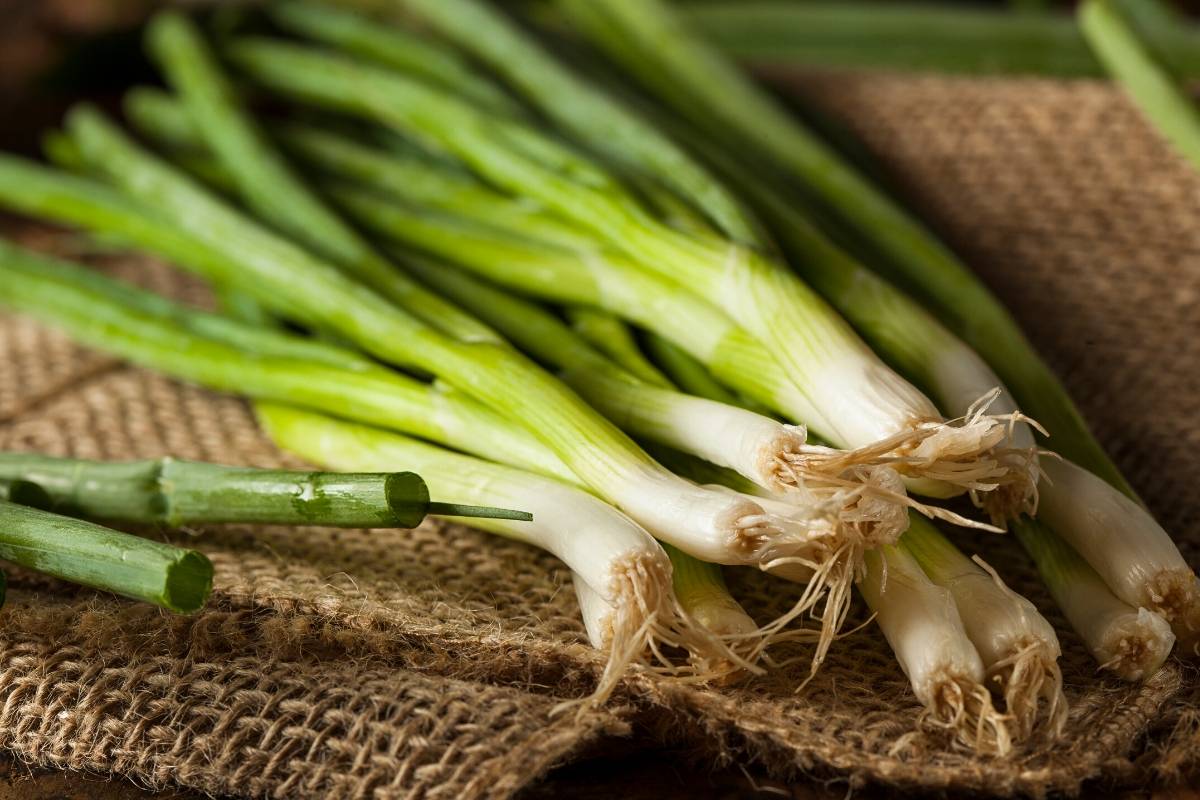
Spring Onions
Spring onions encompass many different varieties of onion, they are usually varieties of bulb forming onions which are harvested early, before the plant has had a chance to form a full onion bulb. The slender stems are often bulbous towards the base and the entire stem from the green top to the root are edible. Spring onions are popular as they are so versatile in cooking and have a mellow unoffensive onion flavour with a crisp texture. They are commonly used in stir fries, noodles, fried rice, salads, and soups
(Spring onions are sometimes incorrectly called shallots, especially in NSW Australia.)
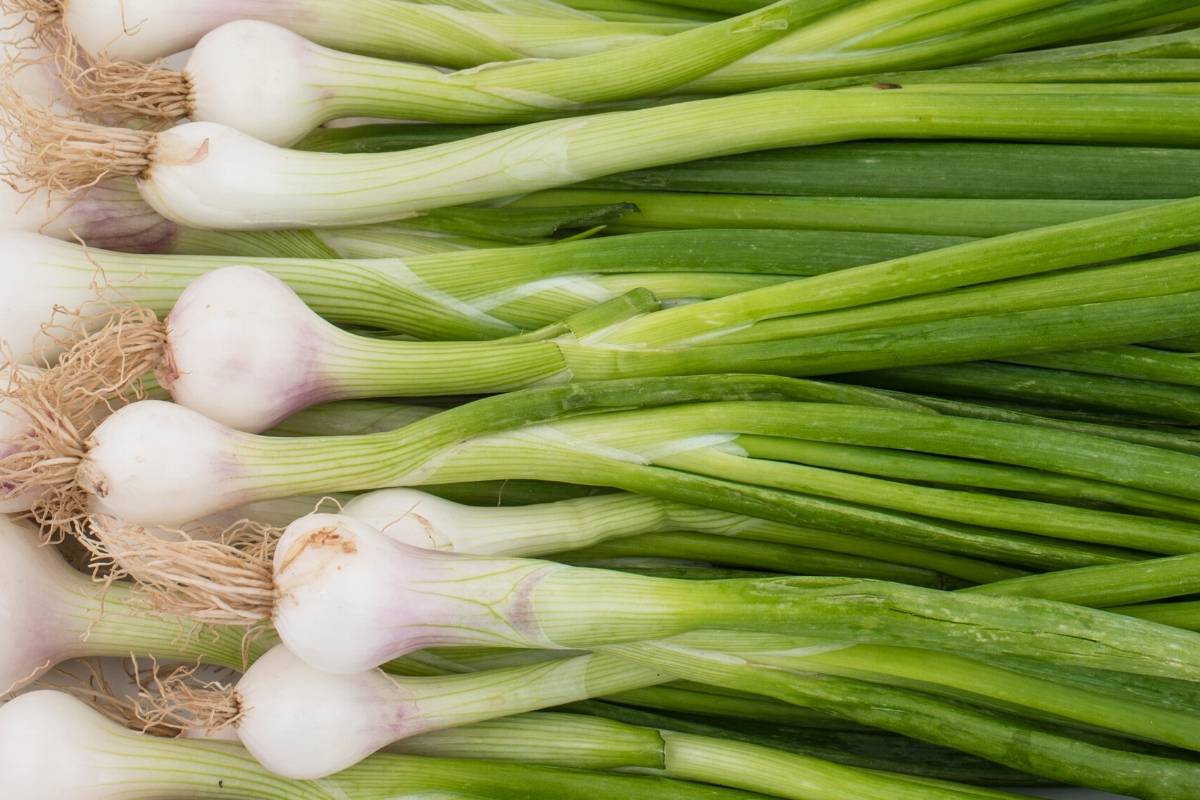
Leeks
Leeks (Allium tuberosum) are some of the tallest edible onion varieties available and they are easily grown from seed. Leeks form a tall dense thick layered stem and have long flat green leaves. The useable portion of the leek is the tall white thick stem. Leeks can be encouraged to grow a taller and whiter stem by using the blanching technique. Leeks have a great mild flavour, and are often used in soups, pies and quiches. Leeks can be re-grown from kitchen scraps by planting the discarded bottom root-end of a leek in water.
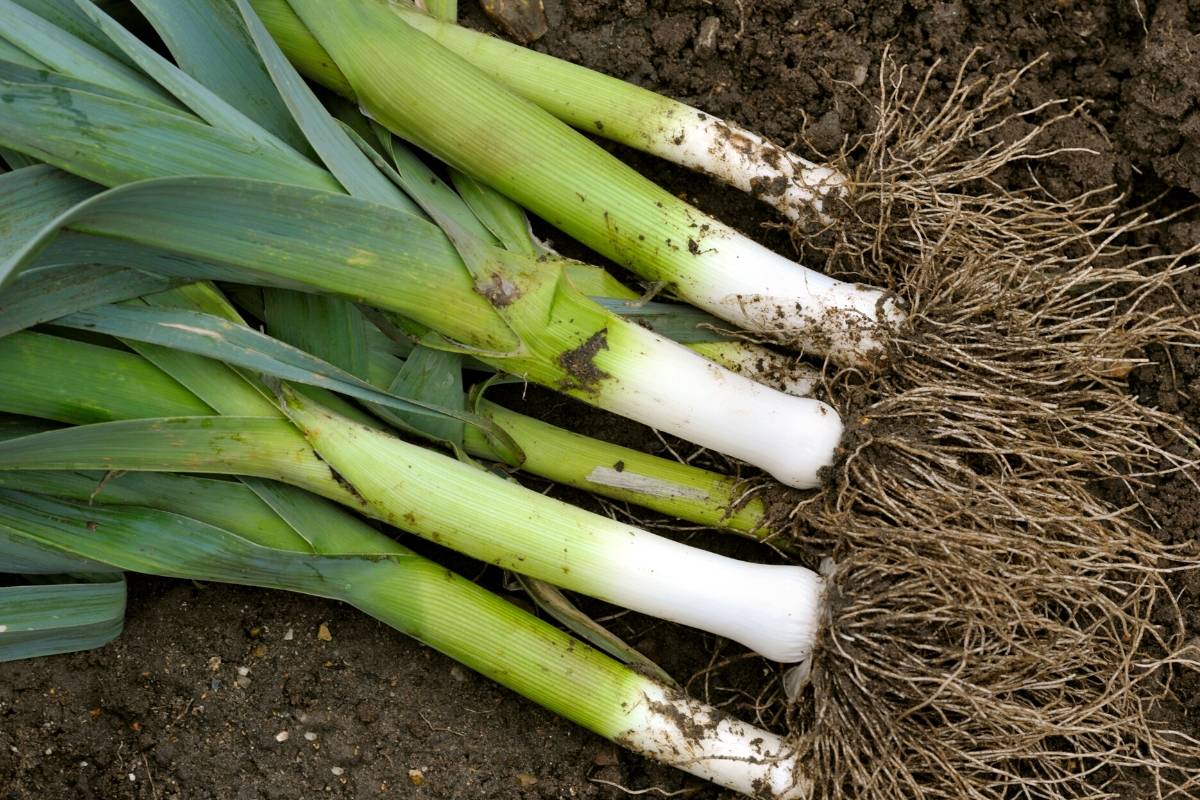
Shallots
Shallots (Allium cepa var.) are a small elongated bulb-type onion and are most often grown from bulbs (called shallot sets) rather than from seed. Shallots reproduce by division, so planting one bulb will produce a cluster of around a dozen bulbs in a season. Potato onions (Allium cepa var.aggregatum) are a close relative of shallots and are grown by the same method.
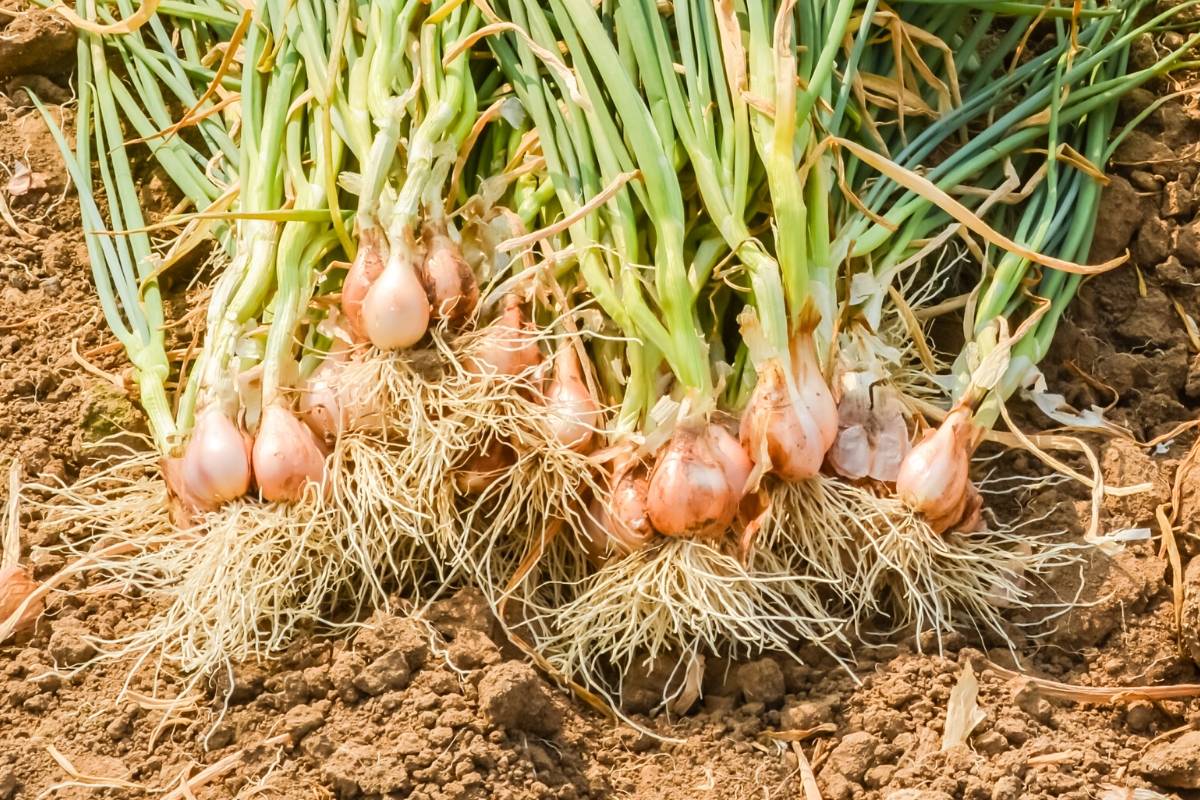
Chives
Chives (Allium schoenoprasum) are a great alternative for people wishing to grow onions who have limited space or time. If you just want that great onion flavour available from your garden all year-round then these perennial onion relatives are a great option. They will grow well in pots or containers and will continue to produce new growth from spring until first frost. Easy to grow from seed and as they are perennial if you just snip them off at the base, they will come back year on year. They form a short, thin hollow green leaf with a delicate onion flavour and produce gorgeous edible purple flowers over summer. Commonly used in potato salads, sandwiches and as a garnish on soups they ae best added at the end of cooking as they will lose flavour rapidly when cooked.
Garlic Chives (Allium tuberosum) are also member of the allium family and just as easy to grow from seed as regular chives though they can be very slow to germinate. Garlic chives are also a perennial crop which will do well in pots or any herb garden. They have broad flat green blade-like leaves with a modest but rich garlicky onion flavour. Commonly used in salads, soups or paired with eggs or seafood.

Garlic
Garlic (Allium sativum) is also best propagated by bulb rather than by seed as it also reproduces by division. One clove of garlic will produce an entire bulb (cluster of cloves) in a growing season. Garlic is usually split into 2 categories; soft-neck garlic and hardneck garlic.
Softneck garlic usually has thin papery white skin, does not produce flower heads and has a good storage life. Softneck garlic grows best in warmer climates and has a mild garlic flavour. This is the most common variety available in supermarkets.
Hardneck garlic usually produces a flower spike (scape) has a firm central stalk and fewer, larger cloves with a stronger, rich spicy flavour. Hardneck varieties are much better suited to growing in cooler climates however they do not store as well as softneck varieties.
Although elephant garlic (also known as Russian garlic) looks and tastes a lot like garlic it is more closely related to leeks than it is to garlic. This giant bulb producing plant is also best propagated from cloves rather than seed.

Within this large and diverse range there is bound to be something from the allium family to suit your requirements! Generally most onion varieties tend to be a rather easy to grow, hardy and pest resistant. Due to their pungent aroma they are often not too bothered by slugs, snails and are even not favoured by rabbits. Most varieties are very hardy and undemanding to grow. If left to flower and produce seeds onions provide gorgeous globe shaped flower heads which attract bees and butterflies to the garden, the blooms are so spectacular that many varieties have been cultivated just for their gorgeous flowers. To get a successful onion crop make sure to buy fresh seed and sow them as soon as possible.
Browse all our onion / Allium seed here.
